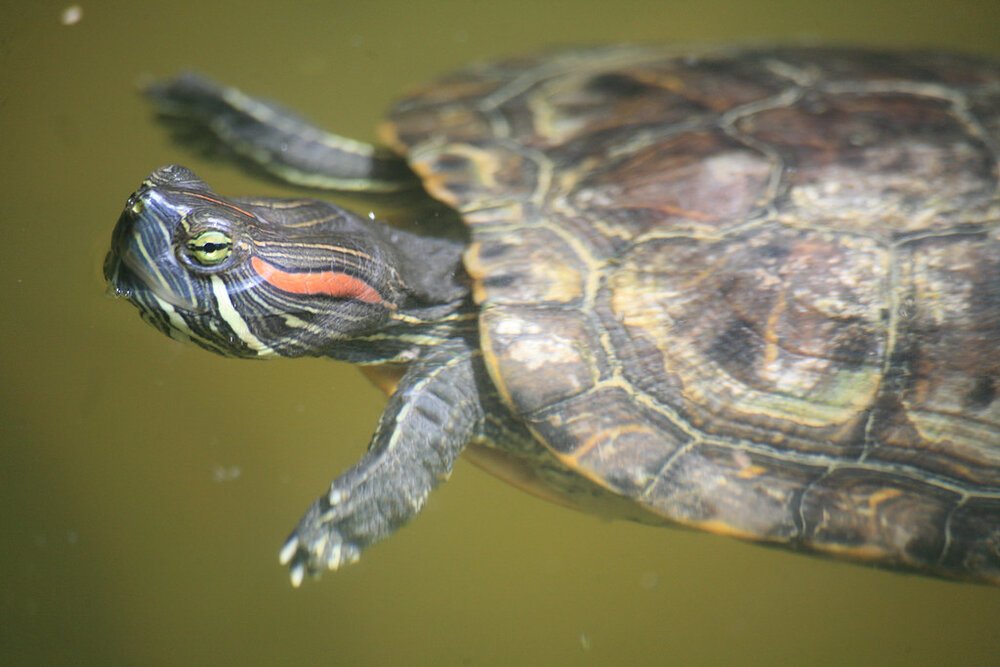Turtles are remarkable reptiles that have adapted to various environments and climates around the world. One of the most intriguing aspects of turtle behavior is how they cope with the winter season. As the temperatures drop and the environment changes, turtles exhibit fascinating behaviors to survive the winter months. In this article, we will explore what turtles do in the winter, where they go, and where they lay their eggs, shedding light on their unique strategies for winter survival.

Turtles are ectothermic creatures, meaning they rely on external sources of heat to regulate their body temperature. As temperatures decrease during the winter, turtles must find ways to adapt and protect themselves from the harsh conditions. Their behavior during this time is influenced by several factors, including the species, geographic location, and the availability of suitable habitats.
One common behavior observed among turtles during the winter is hibernation or brumation. Hibernation is a state of inactivity or dormancy that allows turtles to conserve energy and survive the cold months when food is scarce. Brumation is a similar process in reptiles, characterized by reduced activity and metabolism. The specific term used may vary depending on the region and the species of turtle.

During hibernation or brumation, turtles find refuge in suitable habitats that provide protection from freezing temperatures. Aquatic turtles, such as painted turtles and sliders, often burrow into the muddy bottoms of ponds, lakes, or rivers. They may bury themselves in the sediment or find crevices in submerged vegetation, logs, or rocks. These locations provide insulation and protect the turtles from extreme temperature fluctuations.
Some species of turtles, such as box turtles and tortoises, are terrestrial and cannot submerge themselves in water. Instead, they seek shelter in burrows, leaf litter, or under fallen logs. They may dig into the ground or find existing crevices to create a secure hiding place. These burrows provide insulation and protection against freezing temperatures and potential predators.

Turtles also exhibit interesting physiological changes during hibernation or brumation. Their metabolic rate slows down, reducing the need for energy and allowing them to conserve fat reserves throughout the winter. Their heart rate and breathing also slow down significantly, enabling them to survive with limited oxygen levels.
When it comes to reproduction, turtles typically lay their eggs during the warmer months before the onset of winter. Female turtles carefully select nesting sites that provide suitable conditions for egg development and incubation. They often choose areas with well-drained soil, sufficient sunlight, and suitable temperatures. The specific location and method of egg-laying vary depending on the species.

Aquatic turtles usually lay their eggs in sandy or gravelly areas near bodies of water. Females dig a hole using their hind limbs and deposit their eggs before covering them with soil. This nesting process is crucial for the survival of the eggs, as it helps maintain proper moisture levels and protects them from predators.
Terrestrial turtles, on the other hand, may lay their eggs in burrows they have created or in areas with loose soil, such as fields or forests. Some species, like the box turtle, may travel several hundred meters away from their regular habitat to find suitable nesting sites. The female uses her hind limbs to dig a nest, carefully places her eggs inside, and covers them with soil.

Once the eggs are laid, the female turtle’s role in the reproductive process ends. The eggs are left to incubate in the nest, relying on environmental factors like temperature and moisture for development. The incubation period can vary depending on the species and environmental conditions, ranging from a few weeks to several months.
It’s important to note that not all turtle species hibernate or brumate during the winter. In warmer climates or regions where temperatures remain relatively mild, some turtles may remain active throughout the year, feeding and basking in the sun.
In conclusion, turtles employ fascinating strategies to survive the winter months. Whether through hibernation, brumation, or active behaviors, turtles adapt to the changing conditions by seeking suitable habitats that provide protection and insulation. Their ability to slow down their metabolism and conserve energy allows them to endure the cold season with limited resources. Additionally, turtles carefully choose nesting sites and lay their eggs before the onset of winter, ensuring the survival of the next generation. The diverse behaviors and adaptations observed in turtles during winter highlight their remarkable resilience and ability to thrive in different environments.